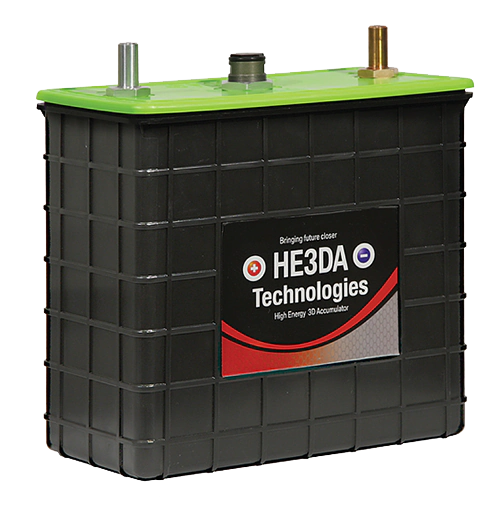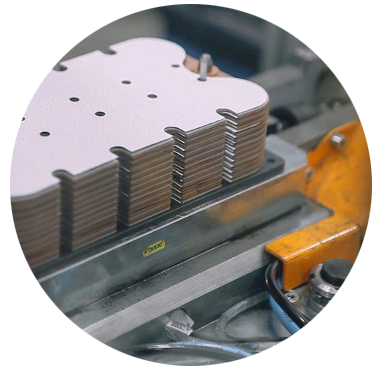Advantages of the HE3DA technology
Safety
They do not burn and do not explode due to the absence of organic substances (except for the electrolyte), low internal resistance and the ability to function in a potentiostatic mode.

Simple battery management
The HE3DA battery works in a very simple way, similar to an ordinary lead-acid battery.
High currents
The HE3DA batteries can not only absorb but also give high currents, thus stabilizing the network.


Universal use of the HE3DA batteries
Thanks to the choice of electrode thickness, the choice of materials used and the design solution, we can offer the production of batteries for a wide range of industries.
Construction of large cells
Low internal resistance and internal electrolyte cooling allow the construction of large cells with a significantly higher capacity than that achievable with current lithium batteries.
Technical parameters
The HE3DA® technology has top technical parameters
%
EFFICIENCY ABOVE
LIFE CYCLES
%
RECYCLABLE
Economic parameters
Compared to the 2D lithium batteries, the HE3DA batteries have significantly lower production costs, even compared to other alternative technologies.
- low production costs of the cell
- simplicity of production processes brings low investments and operating costs
- standard material inputs and the absence of ballast allow for low material costs
- low cost of installing cells in a large capacity source
- low demands on cooling and internal electrolyte cooling
- possibility of using a new concept of a very simple battery management system
- low electricity storage costs
- mass use of the HE3DA batteries in energetics and other industries
Recyclability
The HE3DA® batteries are 100% recyclable, so there are significant savings in this regard as well.

Potential for further development
The technology of the 2D lithium batteries, which is currently used, has reached its technical maximum. It should be noted that without solving problems in certain areas, e.g. in safety. The producers of the batteries in question are already focusing only on reducing the price of batteries, through savings in large-scale production. The HE3DA® technology is still in its infancy, so the potential for further development is huge.
